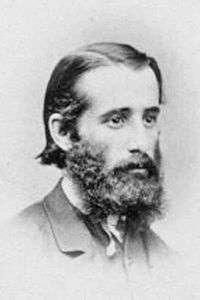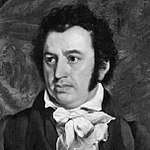Arthur Henderson Smith
Arthur Henderson Smith (July 18, 1845 – August 31, 1932) (Chinese name: 明恩溥; pinyin: Ming Enpu) was a missionary of the American Board of Commissioners for Foreign Missions noted for spending 54 years as a missionary in China and writing books which presented China to foreign readers. These books include Chinese Characteristics, Village Life in China and The Uplift of China. In the 1920s, Chinese Characteristics was still the most widely read book on China among foreign residents there.

Biography
He was born in Vernon, Connecticut, served as a soldier in the Civil War before graduating from Beloit College in 1867, then briefly attended Andover Theological Seminary before taking a degree in 1871 from Union Theological Seminary. After marrying Emma Jane Dickinson, he was ordained into the Congregational ministry. The couple sailed for China in 1872. After two years of language study in Tianjin, they established themselves at Pangjiazhuang, a village in Shandong, where they stayed until the Boxer Uprising, which did not harm their establishment. [1]
The Boxer Uprising
In 1898 and 1899 an indigenous anti-foreign movement arose in Shandong province. One of the missionaries there, possibly Smith, named the participants, mostly farmers, the “Boxers” because of their athletic rituals. The Boxer movement rapidly spread to several provinces in northern China and, eventually, received the support of the Chinese government. Smith and his wife were attending a missionary conference in Tongzhou in May 1900 when all the missionaries in Northern China found it necessary to seek safety from the Boxers by fleeing to Beijing or Tianjin. The missionary William Scott Ament rescued Smith, 22 other American missionaries and about 100 Chinese Christians in Tongzhou and escorted them to Peking. They took refuge in the Legation Quarter during the siege of the legations from June 20 to August 14, 1900.[2]
Smith’s role in the siege was a minor one as a gate guard, but he gathered material for his book, China in Convulsion, which is the most detailed account of the Boxer Rebellion.[3] In 1906, Smith helped to persuade President Theodore Roosevelt to devote the indemnity payments China was making to the United States to the education of Chinese students.[4] More than $12 million was spent on this Boxer Indemnity Scholarship Program.[5]
Later life and legacy
In 1907 Smith was elected the American co-chair of the China Centenary Missionary Conference in Shanghai, a conference attended by more than 1,000 Protestant missionaries. He retired in 1926, 54 years after his arrival in China. His wife died the same year. He died in California in 1932 at the age of 87.[6]
While Gu Hongming who idealized Imperial China, harshly criticised A. H. Smith's writings, the pioneer of China's new literary language Lu Xun wrote that he was influenced by Smith's Chinese Characteristics, which was translated into Chinese, as well as Japanese and several European languages. [7] He is also remembered for speaking out against the Chinese practice of killing baby girls and drawing attention to this problem that was often ignored.[8]
Works by Smith
- Chinese Characteristics (New York: Revell, 1894). Reprinted: EastBridge, D'Asia Vue, with a Preface by Lydia Liu, 2003. ISBN 1-891936-26-3.
- Village Life in China; a Study in Sociology. New York, Chicago [etc.]: F. H. Revell Company, 1899. Various reprints.
- China in Convulsion. New York,: F. H. Revell Co., 1901. Volume 1[9] Volume 2[10]
- Proverbs and Common Sayings from the Chinese: Together with Much Related and Unrelated Matter, Interspersed with Observations on Chinese Things-in-general (1902)
- Rex Christus: an outline study of China (1904)
- The Uplift of China (1907)[11]
- China and America To-day: A Study of Conditions and Relations, Volume 1 (1907)
- Proverbs and Common Sayings from the Chinese, Together with Much Related and Unrelated Matter, Interspersed with Observations on Chinese Things in General. New York, 1914. Reprint, Paragon 1965.
See also
Notes
- Arthur Henderson Smith 1845 ~ 1932 Archived 2014-10-13 at the Wayback Machine Biographical Dictionary of Chinese Christianity (online)
- Thompson, Larry Clinton. William Scott Ament and the Boxer Rebellion: Heroism, Hubris, and the Ideal Missionary. Jefferson, NC: McFarland, 2009, 47
- Thompson, 90, 189
- "Boxer Rebellion Indemnity:the overture of Chinese students coming to the United States". Beloit College. Retrieved 2013-02-23.
- Thompson, 219
- Thompson, 216,219
- Lydia H. Liu, ”Translating National Character: Lu Xun and Arthur Smith,” Ch 2, Translingual Practice: Literature, National Culture, and Translated Modernity: China 1900-1937 (Stanford University Press, 1995).
- Mungello, David (2008). Drowning Girls in China. Grand Rapids, Michigan: Rowman & Littlefield. ISBN 978-0-7425-5531-0. p. 73
- Smith, Arthur Henderson (15 August 2017). "China in Convulsion". F. H. Revell Company – via Google Books.
- Smith, Arthur Henderson (15 August 2017). "China in a Convulsion". Fleming H. Revell Company – via Google Books.
- Smith, Arthur Henderson; Education, Baptist Forward Movement for Missionary; Society, American Baptist Foreign Mission (1912). The uplift of China. Published for the American Baptist Foreign Mission Society by the American Baptist Publication Society – via Internet Archive.
References
- Guide to the Arthur Henderson Smith Papers Beloit College Archives.
- Theodore D. Pappas, “Arthur Henderson Smith and the American Mission in China,” Wisconsin Magazine of History 70.3 (Spring 1987): 163-186.
- Charles Hayford, “Chinese and American Characteristics: Arthur H. Smith and His China Book,' in S.W. Barnett, JK Fairbank, Ed., Christianity in China: Early Protestant Missionary Writings (Harvard 1985).
- Myron Cohen, "Introduction," Village Life in China (Boston: Little, Brown, 1970).
- Lydia Liu,”Translating National Character: Lu Xun and Arthur Smith,” Ch 2, Translingual Practice: Literature, National Culture, and Translated Modernity: China 1900-1937 (Stanford 1995). Shows how Chinese nationalists made use of Smith's Chinese Characteristics which had been quickly translated into Japanese, thence into Chinese.
- Larry Clinton Thompson, William Scott Ament and the Boxer Rebellion: Heroism, Hubris, and the Ideal Missionary. Jefferson, NC: McFarland, 2009
External links
![]()
- Works by Arthur H. Smith at Project Gutenberg
- Works by or about Arthur Henderson Smith at Internet Archive
- WorldCat Arthur H. Smith Authority Page.
- Arthur Henderson Smith Biographical Dictionary of Chinese Christianity
